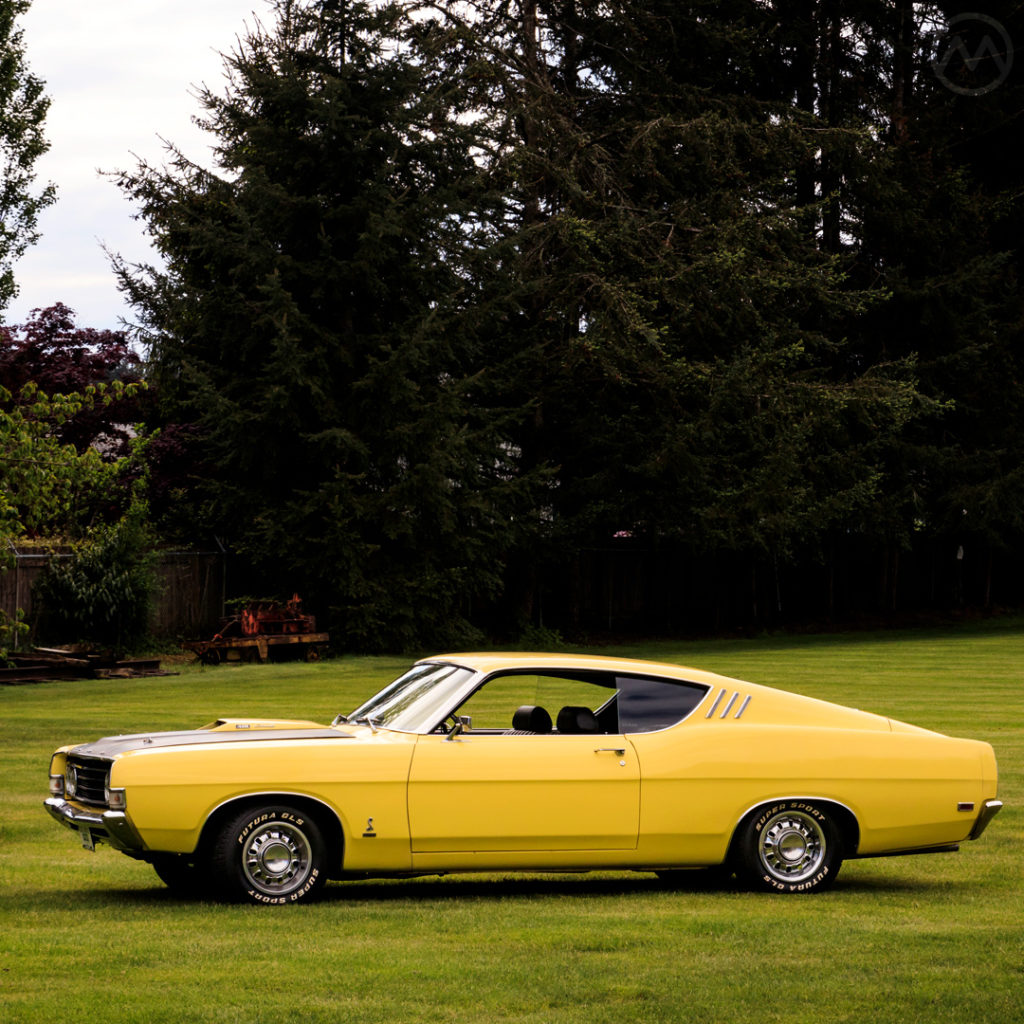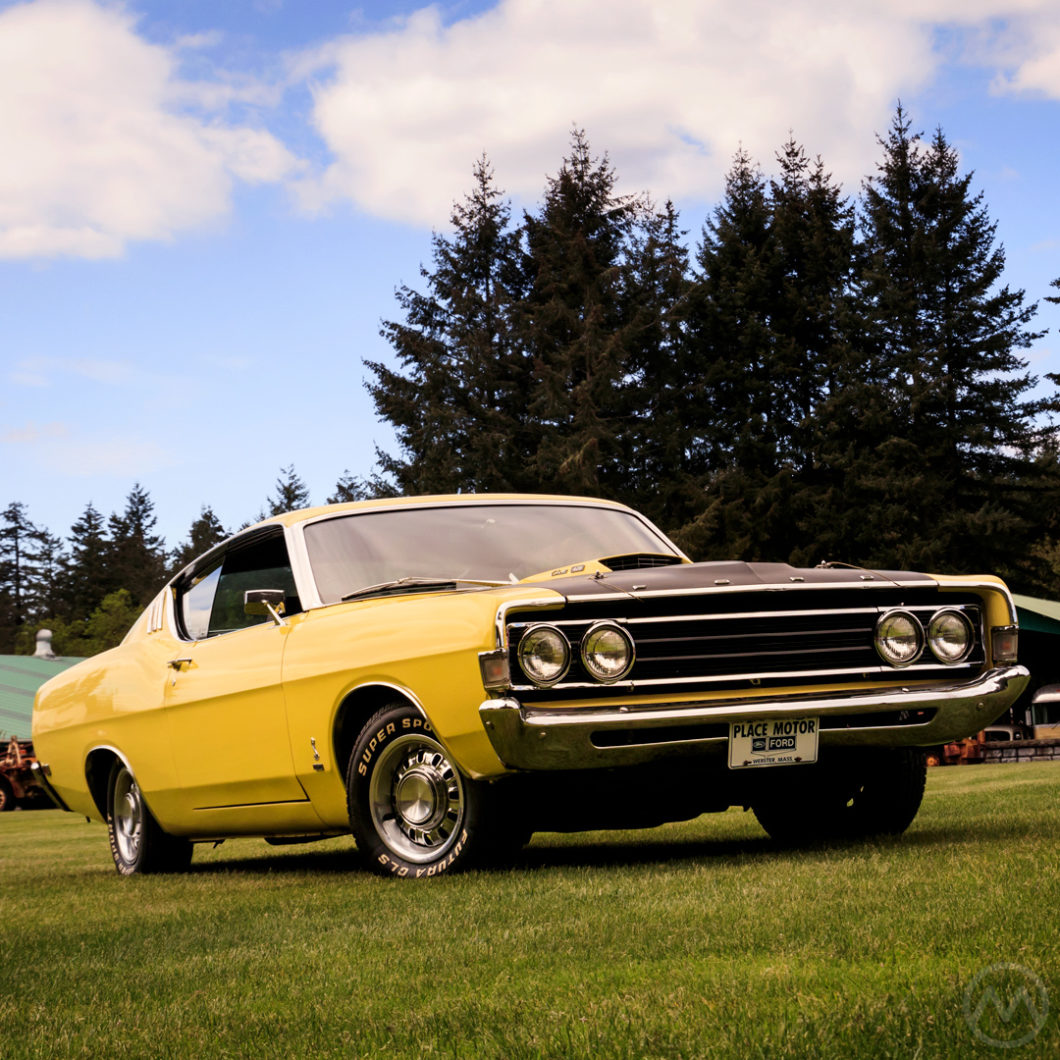Despite the slightly earlier arrival of the 1964 Plymouth Barracuda, Ford was the first company to introduce a compact-based “pony car” as they became popularly known – and it took GM, Chrysler, and AMC until 1966-67 to respond directly.
But the GM had introduced the mid-size “supercar” (what mid-size, big-block “muscle cars” were called in the 1960s) with the Pontiac GTO that very year. While GM was scrambling for a Mustang rival, Ford was slow to match the GTO directly.
Despite offering a purpose-built dragway terror in the Fairlane Thunderbolt in 1964 and plenty of peppy Fairlanes since 1963, Ford didn’t get serious about a GTO rival until the 1966 Fairlane GT (4-spd)/ GTA (auto). But Fairlane GT/GTA sales were way below GTO sales, and Fairlanes as a whole slipped in 1967.
In 1968 Ford decided to catch up by dramatically restyling the Fairlane and introducing a new name for the fancier and faster versions of the car – Torino.
In this plan, the existing unibody Fairlane got a fastback – a trick applied to the Mustang in 1965 and the full-size Fords in 1966 and which was very popular at the time. But beyond the new body style, all of the ‘68 Ford mid-sizes were stretched, mainly ahead of the a-pillar, to make them longer and lower looking.
Fairlanes continued, but the higher-spec and GT versions were now called Fairlane Torinos, though “Fairlane” was often silent. The fastback gave the car the dynamic looks it needed, and a bevy of hot V8s meant it could be very fast for a relatively modest price (typically 5-10% less than a GTO). Torino GTs, most of them fastbacks, were nearly 30% of Fairlane production for 1968, itself up strongly over ‘67.
Roadrunner, Roadrunner…
But just as this success was beginning, Plymouth introduced a new player – the budget-speed 1968 Roadrunner, followed quickly by Dodge’s Coronet Super Bee.
In response, Ford cooked up its own Roadrunner for 1969 – the original Ford Torino Cobra. The recipe was similar, but narrower in focus. The 1969 “Cobra” (Ford literature at the time omitted both “Fairlane” and “Torino”) came only with the 428 Cobra Jet or Super Cobra Jet motors, both with beefed up internals and an optional functioning ram-air scoop.

The regular 428CJ was conservatively rated at 335hp, as was the SCJ and no statistic was given for the increase in power from the ram air. Both engines were serious powerhouses, and the cars used 4-speeders and police suspensions to cope.
They were very fast in a straight line – mid 14-sec quarter miles, but as with other top-drawer muscle cars, a little heavy in front. Many 428 owners ran their cars hard and warranty claims were high on such vehicles.
Like the Roadrunner, the Cobra was essentially a bare-bones Fairlane bench-seat interior inside, with few frills.
This ‘69 Cobra was built in Atlanta, a new assembly location, and is one of the later Cobras built – early ones used decals on the sides, later replaced with subtle snake badges with the word “cobra” beneath them, no doubt to mine Ford’s association with the Shelby Cobra.
An even faster, and rarer, Torino was the Torino Talledega, which featured a different, more aerodynamic front-end for Nascar homologation.
Cobras were built as option packages, so there’s no total on how many were made, but they were relatively rare, and rarer still today. In 1970 a new Torino – one with even more overt muscle car styling primarily the work of Larry Shinoda, replaced the ‘68/’69 cars.

